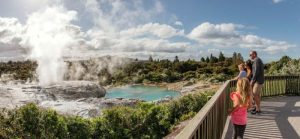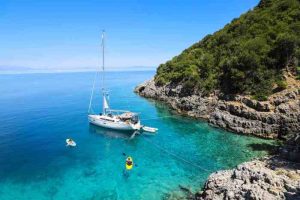
The allure of wildlife safaris, with their breathtaking encounters with nature’s wonders, is undeniable. Yet, the thrill-seeking spirit often seeks more than observation; it craves active participation. This unique blend of wildlife exploration and adrenaline-pumping adventure sports offers a travel experience unlike any other, seamlessly merging the tranquility of the African savanna with the exhilaration of white-water rafting or rock climbing.
This exploration delves into the exciting intersection of these two worlds, highlighting destinations, safety, and the future of this burgeoning travel niche.
From the majestic elephants of the African plains to the snow-capped peaks of the Himalayas, opportunities abound for those seeking a vibrant fusion of wildlife viewing and physical challenges. This combination caters to a growing demographic of travelers who desire both relaxation and invigorating activity, creating unforgettable memories against stunning natural backdrops.
Defining Wildlife Safaris and Adventure Sports
Wildlife safaris and adventure sports, while often enjoyed in similar locations and sometimes overlapping, represent distinct experiences. A safari primarily focuses on observing wildlife in their natural habitat, emphasizing respectful interaction and appreciation for the natural world. Adventure sports, conversely, place the thrill of physical challenge and personal achievement at the forefront, often involving risk and demanding physical exertion.
Understanding these core differences allows for a more nuanced appreciation of the unique appeal of each.Wildlife safaris typically involve guided tours in vehicles or on foot, prioritizing observation and photography of animals. Adventure sports, on the other hand, are characterized by activities like rock climbing, white-water rafting, or bungee jumping, where the focus is on overcoming physical and mental barriers.
Activities Blending Wildlife Safaris and Adventure Sports
The line between wildlife safaris and adventure sports can blur, creating uniquely rewarding experiences. Several activities successfully integrate both aspects. For example, kayaking or canoeing through waterways teeming with wildlife allows for close encounters with animals while simultaneously providing a physically engaging experience. Similarly, hiking or trekking through remote wilderness areas rich in biodiversity combines the thrill of exploration with opportunities for wildlife sightings.
Mountain biking in national parks offers an adventurous physical challenge alongside chances to encounter animals in their natural surroundings.
A Hypothetical Safari Adventure Combining Both Elements
Imagine a seven-day safari in the Okavango Delta, Botswana. The adventure begins with a thrilling microlight flight over the delta, offering breathtaking panoramic views of the vast wetlands and the diverse wildlife below – herds of elephants, prides of lions, and countless birds. The flight itself is an adventure sport element, adding excitement to the safari’s beginning. The subsequent days are a blend of gentler activities like mokoro rides (traditional dugout canoes) through the tranquil waterways, allowing for intimate encounters with hippos and diverse birdlife, and more adventurous activities such as guided kayaking trips navigating through flooded grasslands, offering the thrill of paddling while observing wildlife from a unique perspective.
Evenings might include guided night walks, combining the thrill of exploring the wilderness after dark with the possibility of encountering nocturnal animals like bushbabies and owls. The final day could feature a challenging hike to a scenic viewpoint overlooking the delta, offering stunning views and a chance for final wildlife spotting before departure. This itinerary exemplifies how a safari can seamlessly incorporate adventure sports elements, enhancing the overall experience and creating lasting memories.
Popular Destinations for Combined Safaris and Adventure Sports
The allure of combining thrilling adventure sports with the breathtaking beauty of wildlife safaris is undeniable. Many destinations worldwide offer a unique blend of these experiences, catering to adventurous travelers seeking a diverse and exciting holiday. This section highlights three globally renowned locations that seamlessly integrate these two captivating activities.
Top Destinations for Combined Safari and Adventure Experiences
Several locations globally stand out for their exceptional offerings in both wildlife safaris and adventure sports. These destinations offer a diverse range of activities, ensuring a memorable and fulfilling experience for travelers.
Tanzania, Africa: A Blend of Serengeti Safaris and Mount Kilimanjaro Trekking
Tanzania is a prime example of a destination perfectly blending wildlife safaris and adventure activities. The iconic Serengeti National Park provides unparalleled opportunities for witnessing the Great Migration, observing lions, elephants, leopards, and a vast array of other wildlife. Guided game drives, hot air balloon safaris, and walking safaris offer diverse ways to experience the park’s abundant wildlife. Beyond the Serengeti, the majestic Mount Kilimanjaro presents a thrilling adventure challenge.
Climbing this iconic peak requires physical endurance and preparation but rewards climbers with breathtaking panoramic views and a profound sense of accomplishment. The contrast between the serene wildlife viewing and the strenuous climb offers a unique and unforgettable travel experience.
Costa Rica, Central America: Wildlife Encounters and Thrilling Water Sports
Costa Rica, a biodiversity hotspot, offers a unique combination of rainforest safaris and exciting water sports. Its lush rainforests are home to a remarkable array of wildlife, including monkeys, sloths, toucans, and various species of reptiles and amphibians. Guided nature walks, zip-lining adventures through the canopy, and night hikes provide excellent opportunities for wildlife viewing. The country’s stunning coastline offers a range of water sports, from surfing and white-water rafting to kayaking and snorkeling.
The Pacific and Caribbean coasts boast diverse marine life, making snorkeling and diving exceptionally rewarding. This juxtaposition of jungle exploration and aquatic adventures makes Costa Rica a truly unique destination.
New Zealand: Breathtaking Scenery, Adventure Activities, and Unique Wildlife
New Zealand offers a stunning combination of adventure activities and unique wildlife encounters. The country’s diverse landscapes, from soaring mountains to pristine fjords, provide the backdrop for a range of adrenaline-pumping activities such as bungee jumping, white-water rafting, and hiking. While not as abundant as in African savannas, New Zealand boasts unique wildlife, including the iconic kiwi bird, various species of seals, dolphins, and whales.
Wildlife tours, often combined with scenic cruises or hikes, provide opportunities to observe these fascinating creatures in their natural habitat. The combination of extreme sports and the discovery of unique fauna creates a memorable and adventurous travel experience.
Sample 7-Day Safari and Adventure Trip in Tanzania
This itinerary focuses on a combination of Serengeti safari and Mount Kilimanjaro trekking, although a focus solely on the Serengeti is also possible. This itinerary is a suggestion and can be adapted to individual preferences and fitness levels.
| Day | Morning | Afternoon | Evening |
|---|---|---|---|
| 1 | Arrival in Arusha, transfer to Serengeti National Park | Afternoon game drive in the Serengeti | Dinner and overnight stay at a lodge in the Serengeti |
| 2 | Morning game drive in the Serengeti | Afternoon game drive, focusing on different areas of the park | Dinner and overnight stay at a lodge in the Serengeti |
| 3 | Hot air balloon safari over the Serengeti | Morning game drive, transfer to Arusha | Dinner and overnight stay in Arusha |
| 4 | Travel to Kilimanjaro base camp, acclimatization hike | Further acclimatization, preparation for the climb | Dinner and overnight stay at the base camp |
| 5 | Begin ascent of Mount Kilimanjaro | Continue ascent, reaching a higher camp | Dinner and overnight stay at a higher camp |
| 6 | Continue ascent of Mount Kilimanjaro | Summit attempt, descend to a lower camp | Dinner and overnight stay at a lower camp |
| 7 | Final descent, transfer to Arusha for departure | Departure from Kilimanjaro International Airport | – |
Safety and Sustainability in Combined Safaris and Adventure Sports
Combining wildlife safaris and adventure sports offers an unparalleled travel experience, but it necessitates a heightened awareness of safety and environmental responsibility. Responsible tourism practices are crucial to minimize the impact on both the environment and local communities while ensuring the safety and enjoyment of participants. This section will explore these vital aspects.Responsible Tourism Practices and Environmental Impact Mitigation
Responsible Tourism Practices
Responsible tourism encompasses a wide range of practices aimed at minimizing negative impacts and maximizing positive contributions. For combined safari and adventure tours, this means prioritizing ethical interactions with wildlife, supporting local communities, and minimizing environmental damage. This includes choosing tour operators committed to sustainable practices, respecting wildlife viewing guidelines, and avoiding activities that could disturb animals or their habitats.
For example, maintaining a safe distance from wildlife during safaris, avoiding the use of drones near sensitive areas, and supporting locally owned businesses contribute to responsible tourism.
Environmental Impacts and Mitigation Strategies
Adventure activities, particularly those involving motorized vehicles or significant infrastructure development, can contribute to habitat destruction, pollution, and disturbance of wildlife. Similarly, increased tourist traffic can lead to waste generation and increased pressure on local resources. Mitigation strategies include employing eco-friendly transportation (e.g., electric vehicles or walking/cycling where feasible), implementing waste management systems, promoting responsible water and energy consumption, and supporting conservation initiatives.
For instance, opting for lodges that use solar power and implement water recycling systems directly reduces environmental impact. Furthermore, supporting local conservation projects, such as anti-poaching initiatives or habitat restoration programs, actively contributes to environmental sustainability.
Safety Measures for Participants
A comprehensive safety plan is paramount for participants engaging in combined safari and adventure tours. This involves pre-trip briefings, adherence to safety guidelines, and access to appropriate medical assistance.
Pre-Trip Preparations and Briefing
Before embarking on a combined safari and adventure tour, participants should receive detailed briefings covering safety protocols, potential hazards, and emergency procedures. This includes information on appropriate clothing and equipment, basic first aid, and communication strategies in case of emergencies. Furthermore, understanding the specific risks associated with each activity, such as wildlife encounters during safaris or altitude sickness during trekking, is crucial for preparedness.
Physical fitness assessments and medical clearances might also be required, depending on the intensity of the activities.
Safety Guidelines and Emergency Procedures
Participants must strictly adhere to all safety guidelines provided by tour operators and guides. This includes respecting wildlife viewing distances, following instructions during adventure activities (e.g., using safety harnesses during rock climbing), and promptly reporting any injuries or incidents. Emergency procedures should be clearly communicated and practiced, including emergency contact information, evacuation plans, and the location of first-aid kits.
Having a designated emergency contact person informed of the itinerary is also essential.
Comparing Wildlife Safaris and Adventure Sports with Other Travel Niches
Wildlife safaris and adventure sports, while distinct, often share overlapping appeal with other travel niches. Understanding these similarities and differences allows for a more nuanced appreciation of the unique offerings of each. This comparison highlights key aspects to help potential travelers make informed choices based on their preferences.
Wildlife Safaris and Adventure Sports Compared to Birdwatching Tours
Birdwatching tours focus intensely on avian species identification and observation, often in specific habitats. While wildlife safaris may include birdwatching, their scope is broader, encompassing a wider range of fauna and flora. Adventure sports add a layer of physical activity absent in typical birdwatching trips. The pace is generally slower and more focused on observation in birdwatching tours compared to the often more dynamic experience of combined safaris and adventure activities.
For example, a birdwatching tour in Costa Rica might focus on identifying specific hummingbird species, while a combined safari and adventure tour might include zip-lining through the rainforest alongside birdwatching opportunities.
Wildlife Safaris and Adventure Sports Compared to Arctic and Polar Expeditions
Arctic and polar expeditions primarily focus on unique icy landscapes and the specific wildlife found in these extreme environments, such as polar bears, penguins, and various seals. While both share a focus on wildlife viewing, the environments and types of animals observed differ drastically. Adventure sports in these regions often involve activities like ice climbing or kayaking, whereas safaris are typically associated with warmer climates and different activities, like jeep safaris or walking safaris.
The logistical challenges and specialized equipment needed for polar expeditions also set them apart from the generally more accessible nature of many safari and adventure sport combinations.
Wildlife Safaris and Adventure Sports Compared to Golf Vacations
Golf vacations prioritize the playing of golf at prestigious courses, often incorporating luxury accommodations and amenities. The focus is entirely on the sport and its associated social aspects. Wildlife safaris and adventure sports are fundamentally different, emphasizing wildlife encounters and physical activity in natural environments. While both can incorporate luxury elements, the core experiences are vastly dissimilar. A golf vacation in Scotland might focus on challenging links courses, while a safari and adventure trip in Tanzania would prioritize game viewing and perhaps mountain climbing or white-water rafting.
Wildlife Safaris and Adventure Sports Compared to Sailing and Yachting
Sailing and yachting emphasize the experience of being on the water, exploring coastlines, and potentially engaging in water sports. While some sailing and yachting trips might include wildlife viewing opportunities, it is not the primary focus. Wildlife safaris and adventure sports typically occur on land or in inland waters and focus more intensely on terrestrial wildlife and land-based activities.
A sailing trip in the Greek islands might focus on exploring picturesque harbors and coves, while a safari in Botswana might emphasize encountering elephants and lions in national parks.
Wildlife Safaris and Adventure Sports Compared to Jungle and Rainforest Exploration
Jungle and rainforest exploration often shares overlapping elements with wildlife safaris, focusing on wildlife encounters and the unique ecosystems of these environments. However, the emphasis on adventure sports distinguishes safari and adventure combinations. Jungle exploration might focus on trekking and guided walks through dense vegetation, while a combined safari and adventure experience might include activities like canyoning or rappelling alongside wildlife observation.
Both prioritize experiencing the natural world, but the level and type of activity differ.
Wildlife Safaris and Adventure Sports Compared to Wellness Cruises
Wellness cruises prioritize relaxation, rejuvenation, and health-focused activities like yoga, spa treatments, and healthy eating. While some cruises might offer excursions that include wildlife viewing, this is secondary to the overall wellness focus. Wildlife safaris and adventure sports offer a completely different experience, prioritizing physical activity and wildlife encounters over relaxation and pampering. A wellness cruise in the Caribbean might focus on meditation and detox programs, while a safari and adventure trip in Costa Rica would focus on physical activities and exploring biodiversity.
Wildlife Safaris and Adventure Sports Compared to Geological Destinations
Geological destinations focus on unique rock formations, caves, volcanoes, and other geological features. While some geological destinations might offer wildlife viewing opportunities, it’s not the central focus. Wildlife safaris and adventure sports prioritize wildlife encounters and physical activity, often in areas with significant geological interest but not necessarily as the primary attraction. A trip to the Grand Canyon might focus on hiking and exploring the canyon’s geological formations, while a safari in Kenya might prioritize game viewing and potentially climbing Mount Kilimanjaro.
Wildlife Safaris and Adventure Sports Compared to Music and Performing Arts Travel
Music and performing arts travel centers on attending concerts, festivals, or performances, often incorporating cultural experiences. This niche is vastly different from wildlife safaris and adventure sports, which prioritize wildlife encounters and physical activity in nature. The focus is entirely different, one on artistic expression and the other on natural wonders and physical challenges. A music festival in Glastonbury would contrast sharply with a safari and adventure experience in South Africa.
Wildlife Safaris and Adventure Sports Compared to Educational Tours
Educational tours focus on learning and gaining knowledge through structured programs and guided experiences. While wildlife safaris and adventure sports can incorporate educational elements, they are not primarily designed for structured learning. Educational tours might focus on specific historical or cultural topics, while wildlife safaris and adventure sports prioritize experiencing nature and engaging in physical activities. An educational tour focusing on primate behavior in the Amazon would be different from a combined safari and adventure trip to the same region, even though both might involve primate sightings.
Marketing and Promotion of Combined Safaris and Adventure Sports
Marketing combined safari and adventure tours requires a strategic approach that highlights the unique blend of wildlife encounters and thrilling activities. Successfully reaching the target audience involves crafting compelling messaging and leveraging various marketing channels to showcase the unparalleled experiences offered.The key to successful marketing lies in understanding the target audience and tailoring messaging to resonate with their interests and aspirations.
This involves more than just advertising; it’s about crafting a brand identity that embodies the spirit of adventure and the wonder of the natural world.
Marketing Slogan and Tagline
A strong slogan and tagline are essential for capturing attention and conveying the essence of the combined safari and adventure tour package. For example, “Wild Thrills: Where Adventure Meets Wildlife” is concise and impactful, immediately communicating the core offering. Alternatively, “Unleash Your Inner Explorer: Safari Adventures Await” appeals to a sense of personal discovery and excitement. A tagline could further refine this, such as “Experience the ultimate wildlife encounter, fueled by adrenaline.” The chosen slogan and tagline should be memorable, easily shareable, and reflective of the brand’s identity.
Target Audience Demographics
The target audience for combined safari and adventure tours is multifaceted, encompassing a range of demographics united by a shared desire for unique and exciting travel experiences. The primary demographic includes affluent millennials and Gen X individuals (aged 25-55) with a high disposable income and a strong interest in both wildlife and adventure activities. This group often prioritizes authentic experiences and sustainable tourism.
Secondary demographics include families seeking memorable vacations, active retirees looking for stimulating travel options, and adventure travel clubs or groups. Understanding these nuances allows for targeted marketing campaigns across various platforms.
Sample Social Media Posts
Social media is a powerful tool for showcasing the excitement of combined safari and adventure tours. Visually-driven content is key.
Post 1:
Image: A panoramic shot of a breathtaking landscape, featuring a jeep driving through a savanna with elephants in the background, while a rock climber is scaling a nearby cliff face in the distance. The image is vibrant and high-resolution, capturing the beauty of the natural setting and the thrill of the adventure.
Caption: “Experience the ultimate fusion of wildlife and adventure! Witness majestic elephants on a thrilling safari, then conquer the heights with breathtaking rock climbing. #WildAdventures #SafariLife #AdventureTravel #UnforgettableJourney”
Post 2:
Image: A close-up shot of a person zip-lining through a lush rainforest canopy, with glimpses of wildlife like monkeys or colorful birds visible in the background. The image is action-packed and dynamic, emphasizing the adrenaline rush of the experience.
Caption: “Soar through the rainforest canopy on an exhilarating zip line adventure, then track elusive wildlife on an unforgettable safari. Book your combined tour today! #Ziplining #RainforestAdventure #WildlifeSafari #TravelGoals”
Post 3:
Image: A collection of photos showcasing various aspects of the tour: a stunning sunrise over the savanna, a group of people enjoying a delicious meal under the stars, a close-up of a majestic lion, and participants white-water rafting. The collage is visually appealing and highlights the diversity of the experience.
Caption: “From breathtaking safaris to heart-pumping adventure activities, our combined tours offer an unforgettable escape. Create memories that will last a lifetime! #SafariAdventure #TravelInspiration #BucketList #WildlifePhotography”
Future Trends in Combined Safaris and Adventure Sports

The convergence of wildlife safaris and adventure sports is poised for significant evolution, driven by increasing demand for sustainable and unique travel experiences. Future trends will be shaped by a growing awareness of environmental responsibility, a desire for authentic cultural immersion, and a push for personalized, high-quality adventures. This section explores these emerging trends and offers a glimpse into the future of this exciting travel niche.
Sustainable and Responsible Adventure Tourism Practices
The future of combined safaris and adventure sports hinges on sustainable and responsible practices. This means minimizing environmental impact, supporting local communities, and respecting wildlife. We’re seeing a rise in eco-lodges powered by renewable energy, carbon-offsetting initiatives for travel, and a focus on community-based tourism projects that directly benefit local populations. For example, lodges partnering with local artisans to sell their crafts, or employing local guides and staff, significantly contribute to the economic well-being of the region.
Furthermore, stricter regulations on wildlife interactions, such as limiting the number of vehicles at a sighting or enforcing responsible wildlife viewing guidelines, are becoming increasingly common, safeguarding both animals and the natural environment.
Predicted Popularity of Specific Adventure Activities within Safari Contexts
Several adventure activities are expected to gain significant traction within safari contexts. For instance, ecotourism activities like guided birdwatching tours, focused on specific species or habitats, are becoming increasingly popular. Similarly, wildlife photography workshops, led by professional photographers, offer a more immersive and educational experience. Furthermore, activities like hot air ballooning over the savannah or guided cycling tours through national parks provide unique perspectives on the landscape and wildlife, appealing to a broader range of travelers.
The rising popularity of these activities reflects a shift towards more mindful and enriching travel experiences, going beyond simple game drives.
Innovative Safari and Adventure Travel Experiences
The industry is witnessing the emergence of innovative and unique safari and adventure travel experiences. One example is the integration of technology, such as using drones for wildlife monitoring and providing guests with real-time updates on animal sightings, enhancing the overall experience. Another trend is the rise of “glamping” – glamorous camping – offering a comfortable and luxurious alternative to traditional safari lodges, attracting a wider audience.
Furthermore, the combination of safaris with wellness retreats, offering yoga and meditation sessions amidst breathtaking natural settings, is gaining popularity, creating a holistic and rejuvenating travel experience. Finally, specialized safaris focused on specific animal species or ecological niches, such as primate trekking in Uganda or exploring specific bird migration routes, cater to a niche market of highly engaged travelers.
Epilogue

Ultimately, the combination of wildlife safaris and adventure sports presents a compelling travel proposition, offering a unique blend of relaxation, exploration, and exhilaration. By prioritizing responsible tourism practices and embracing sustainable initiatives, this exciting niche can continue to thrive, providing unforgettable experiences for adventurers while preserving the natural beauty of our planet. The future holds exciting possibilities for innovative experiences, promising even more thrilling and enriching journeys for years to come.
General Inquiries
What is the best time of year to go on a combined safari and adventure trip?
The ideal time depends on the specific location. Research the best weather conditions and wildlife viewing opportunities for your chosen destination.
What level of fitness is required for these combined trips?
Fitness levels vary greatly depending on the chosen activities. Some trips are suitable for all fitness levels, while others require a higher degree of physical fitness. Check the trip description for specific requirements.
How much does a combined safari and adventure trip cost?
Costs vary significantly based on location, duration, activities included, and level of luxury. Expect a wide range of price points.
What vaccinations and health precautions are necessary?
Consult your doctor well in advance of your trip to discuss necessary vaccinations and preventative measures for your specific destination. Malaria prophylaxis may be required in some areas.





